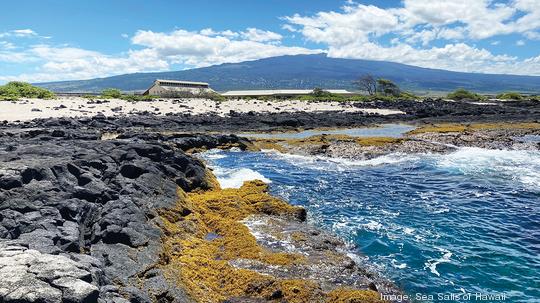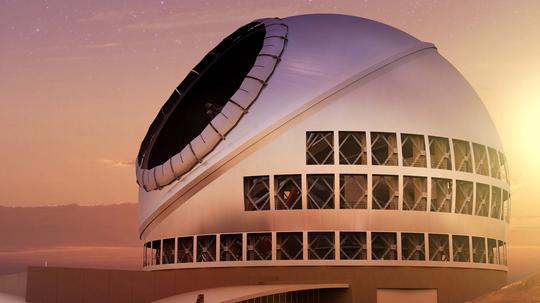When Pacific Business News gathered four Hawaii Island business leaders for a virtual roundtable on June 18, we found them optimistic overall in light of the pent-up demand for travel to the island by visitors, the loosening of interisland travel, and the light at the end of the tunnel of Covid-19 restrictions.
They’re looking ahead to post-pandemic recovery, including the potential for economic diversification for the Island and strategies for managing the return of normal levels of tourism.
The most pressing problem on their plates right now is familiar to business owners across the country — a labor shortage that coexists with what remains a record-high unemployment figure.
Labor shortage looms
PBN recently reported that 86% of Hawaii businesses are struggling to fill open positions, according to a survey by the Chamber of Commerce Hawaii.
“At almost every chamber board meeting, it comes up as a big issue,” said Doug Simons, vice president, Hawaii Island Chamber of Commerce, and chair of the Economic Development Committee. “Rebuilding capacity is being pretty badly limited by lack of labor at this point.”
Simons noted there are a number of factors at play and some hopes on the island that the resumption of school in the fall, and the wind-down of unemployment benefits (especially the federal plus-up) will loosen up the labor supply.
“I haven’t heard of a really comprehensive, convincing analysis or explanation for why there’s been such a big gap between demand and the availability of labor. I think it caught everybody a bit off guard, but it’s real,” he said.
It’s real and it is holding businesses back. Our small business panelist, Sandra Gibson, owner of Sea Salts of Hawaii, had made some bold moves through the pandemic, despite big losses in revenue, including buying the wholesale business that had provided her sea salt and investing in improvements to that property.
A Paycheck Protection Program loan and Economic Injury Disaster Loan relief, along with county grants, helped see her through the crisis and fund the expansion.

Now business is picking up and she’s finding it difficult to fill a position in production fulfillment at the salt farm.
“People will reach out and apply and then sometimes not return phone calls,” said Gibson. “We hear from other small businesses, too, that it’s just difficult to get people to apply seriously, who really want to come to work. And then also I think some people have moved away. We had one employee who was really strong, who moved away during Covid almost right away. And then I’m sure some people have moved into different professions. As a tiny business, we can attest that it’s been tough finding people to hire.”
And not just on Hawaii Island; Gibson and her husband are serial entrepreneurs who have been exploring an opportunity in Honolulu that could employ as many as 60 people, but they’re hesitant to pull the trigger, fearful they’ll be unable to staff it well enough to be successful.
In addition to the labor supply, they worry about the uncertainty over when restrictions on business operations will be lifted, or if they’ll be tightened back down.
County officials have had their eye on the problem, as well. Douglass Adams, director of research and development for Hawaii County, observed that through the spring, with concerns about the island’s vaccination rate, which was lower at the time. He said it probably outweighed any labor market distortion of the unemployment benefits, and now, is shifting to becoming the bigger factor — one that should fade as the requirement for people to prove they are job hunting goes into effect.
There’s also a seasonal worker wrinkle to the labor shortage on Hawaii Island, he said, that has been a concern. “Our colleges and universities have been closed and students haven’t been available to take those positions here in the summer, they’re just not here to do it.”
Other factors driving the shortage, he believes, includes people who used the pandemic interruption to take a chance on starting a business of their own rather than working for others, or who, at the other end of their working lives, simply chose to retire.
The visitor industry is seeing a healthy rebound, but one that has quickly run ahead of this labor shortage, said Ross Birch, executive director of the Island of Hawaii Visitors Bureau.
“Most of the hotels are aggressively looking for employees,” Birch said. “Many are looking for 100-plus employees at this point, and that doesn’t even really include any banquet staff because the groups haven’t really started kicking in yet, so that could actually amplify [the need] even more.”
To lure in employees, hotels have been offering such things as signing bonuses and salary increases, but even those are having a hard time overcoming the sheer lack of applicants. They’re just not there.
The industry went into the pandemic with a vulnerability in the first place, said Birch. “We had many in our workforce, almost 25% of the frontline workers, who were facing or approaching retirement, who were then basically put into retirement not necessarily by their own choice, but through the process of a great severance and a retirement package that did that. So, I think we have a higher percentage of those who could be returning to these positions but who are now retired.”
Looking ahead in 2021 and beyond
Labor issues aside, our panel was optimistic about the year ahead, anticipating more recovery in the tourism sector, as well as opportunities to diversify the economy and reinvest in fundamentals.
“I’m excited about the opportunities for infrastructure development,” said Adams, describing county government’s plans. “There’s a chance that with funding, we can make some real inroads into some of the issues that the county has in infrastructure. Roads and bridges are a big deal, but also water and wastewater and the work that we’re trying to do with broadband, providing it to our unserved and underserved population on this island. [That] is something that we’re really focused on.”
The county is also figuring out how best to use funds coming from the American Rescue Plan to directly support small business, whether it’s in the form of micro-loans or grants. Business literacy programs are on the table, too, giving Hawaii Island entrepreneurs who taken a chance on starting new businesses during the pandemic the skills the need for long-term success.
“They have the ideas, they have the creativity,” Adams said. “[The county can] help with the business side of things.”
Also up next for the county is finding ways to help people continue to afford to make a living on Hawaii Island, everything from boosting affordable housing development to promoting economic development and diversification, especially in STEM fields.
Simons regards science and technology as a potential key to Hawaii Island’s opportunities. He is both chair of the chamber’s economic development committee and a veteran astronomer, who in April was named as the next director of the University of Hawaii Institute for Astronomy, starting on Sept. 1.
“My particular focus is on ensuring there’s a future for the observatories through the renewal of the master lease, which needs to be buttoned up by mid-decade to be sure that there’s going to be a future beyond the end of the lease, which is 2033.”

He pointed out that up to 550 people work for the observatories, which have combined annual operating budgets of $70 to $80 million per year. “And most of that money goes directly into the Hawaii Island economy,” he said. “[The observatories are] the primary source of high-tech jobs, which is obviously important for diversifying the economy.”
That high-tech nexus was threatened by lengthy protests against the Thirty Meter Telescope that had been slated for construction atop Mauna Kea. Covid and its related shutdowns paused both the protests and progress on construction, delaying by a year the U.S. Decadal Survey for astronomy.
This is conducted by the National Academy of Sciences and sets priorities for federal funding of astronomy projects. A list of priority projects had been expected in 2020 — that’s been postponed to July or August of this year, said Simons. The Hawaii Island astronomy community has its fingers crossed that TMT will come out at the top of the list, boosting the facility’s opportunities to move forward.
On the tourism front, Birch is seeing “a supreme demand for travel to the island,” some of it pent-up demand from people who have postponed Hawaii travel for the past year and a half,



